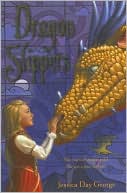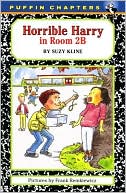Even though the general tone in my reading class has settled into quiet reading, there are still problems that I need to deal with. My time is limited, so I have to triage. Right now, there are three main sets of readers that I am looking at: the quiet readers, the information book readers, and the "flitters".
Quiet readers
In every class, there are some students who just seem to love reading. They have their books every day, sit quietly, and never misbehave during independent reading time. So, what's the problem? There are some of these readers who are not building a cohesive mental model of the text. That is, they read a page, and may understand some parts, but they are not really understanding the narrative from beginning to end. A book like Dragon Slippers is one that these readers are often drawn toward. There are entertaining bits on each page...but a struggling reader might not be able to put these entertaining bits together into a whole story.
These readers do not announce themselves. In fact, they are sometimes hard to spot. After all, they love books! But I need to find them and work with them. In order to do this, I try to check in with 3-4 of the quiet readers each day. These are brief, chatty talks in which we talk about the book. Over the course of several days, I can usually figure out if the readers are building a big picture of the book, or just going image to image. Then, on the next library day, I try to make sure that we browse together to find a book that has a nice, easy to understand storyline. Kids who are drawn to complex fantasy books that they can't yet totally understand will often enjoy reading The Secrets of Droon or The Spiderwick Chronicles. Both of these have a single storyline that readers can easily comprehend.
Information book readers
I have several students who lug around books filled with information. I've talked with them, and I'm satisfied that they are doing a decent job of understanding one paragraph at a time. But I want to get them to be able to find success in a chapter book. As fourth graders, they need to be able to follow a story over multiple pages.
These readers often need a lot of support. Today, I sat down and read the first chapter of a Horrible Harry book with a student who said that he didn't like chapter books. I read a paragraph, he read a paragraph. Then we talked about what happened. I glanced ahead a few pages and gave him a goal for reading. "In the next part of the chapter, you're going to learn about stub people. I want you to find out who the stub people are." Because he's not quite at the stage of finding a whole story interesting, I had to give him a tangible goal to get him through the next two pages.
While he read, I did two quick check-ins, and then came back. "Who are the stub people?" I asked. We talked about it. It was the end of reading time then, and time to get on with the lesson, so I told him, "Let's keep that book in a safe place. Next time, we'll read together again." Keeping these kids engaged in a book requires a lot of close interaction. They're used to a new topic on every page, and the slowly unfolding nature of a narrative seems dull to them at first.
I like the Horrible Harry series a great deal for these students, because it is so funny and easy to understand. Dan Gutman's My Weird School series also works well for these reluctant readers.
"Flitters"
Flit, flit, flit. Every time I turn my head, it seems that these readers are up. "I finished this book," or, "I didn't like it," or "It was boring."
These readers require a different approach. Unlike the information book readers, they haven't yet shown much engagement in any text. So I like to use picture books to help them. Last time, I wrote about how much my students enjoyed the Diary of a Worm books. But I have to be careful with the picture books. On the one hand, picture books are great, with their interesting plots and lush artwork. On the other hand, I want kids to choose picture books, not just read them because they don't know how to read other books.
So I push kids toward deeper picture books, like fairy tale retellings and historical fiction. I happened to pick up Anansi's Party Time on sale last year, and it's been making the rounds in my classroom this fall. This is a fairly easy text, but as a trickster tale it can become a good background knowledge book for kids. Later in the year, when we talk about genre, I can pull this off the shelf and kids can say, "I've read that!"
I also like to keep a good selection of books that are similar in topic or plot. For example, I've acquired three different versions of The Twelve Dancing Princesses. Reluctant readers often like to read each version and then talk to me about which they liked best and why.
Independent reading time is always a challenge. But I love being able to use this 15 minutes every day to help students discover the world of books. By thinking carefully about my readers, I can make sure that this time is used well.






I've got all three types in my class too! I enjoyed this post and appreciate the book suggestions!
ReplyDeleteDoris
Thirdgradethinkers8
I love the way you sorted out your readers - and the way you shared your thinking with students.
ReplyDelete